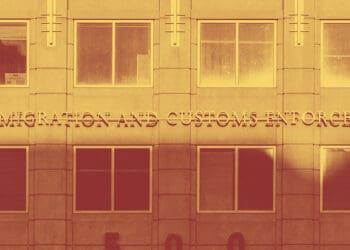Compliance departments face a growing challenge
In highly regulated industries such as financial services and insurance, compliance risk has become unnervingly high. These firms often struggle to keep up with changing regulatory requirements and avoid the growing financial penalties for noncompliance.
As a result, regulated organizations invest large amounts of time and money to ensure that compliance departments have the staff and tools necessary to review changing regulations and adopt organizational policies in response. However, too often these departments do not have the processes or technology needed to ensure the changes they recommend are implemented correctly throughout the organization.
In the case of customer communications, IT departments have the skills to make the needed changes, but not the time or full expertise to review and audit the updated documents. Moreover, many legacy, print-centric customer communications management (CCM) processes and systems are simply not flexible enough to adjust to the unique compliance challenges presented by today’s wide range of communications channels including mobile, email, web pages and social media.
With the rise of customer experience (CX) as a source of competitive advantage in regulated industries, a streamlined and responsive customer communications compliance process has also become a matter of critical importance. While compliance requirements must be maintained, maximizing flexibility for document design and development teams will make it easier to innovate effectively within an existing compliance framework.
Marry compliance and innovation using a holistic CCM approach
Instead of seeing compliance as a barrier due to inflexible approved templates, cumbersome legacy CCM systems and compliance approvals that only take place near the end of the document development process, a more strategic approach can leverage today’s CCM technologies to build compliance requirements into the design of communications from the beginning. This approach will benefit both the compliance function and the organization’s ability to improve time-to-market with relevant customer communications.
Integrating compliance in design and development creates a more holistic compliance approval process. Rather than reviewing individual items or pages for approval or combating shadow correspondence libraries developed outside the control of the compliance department, a holistic approach ensures compliance receives a full look at all communications going out to customers.
An approach of this kind thereby reduces the risk of “errors of omission,” in which compliance professionals miss or do not see problems because they do not have access to the entire communication in the same form the customer experiences it. For example, if a font is too small or the placement of text is incorrect, compliance professionals who are reviewing a PDF document that provides full screenshots, links and other information being presented to customers are able to clearly see and provide feedback on compliance issues.
More importantly, by providing compliance with a full view of the entire communication package in every form in which that material is going to appear—paper, web pages, mobile applications and so on—it is possible to fully review and analyze not only what customers will see, but how they will see it.
Moving compliance to the front end of the workflow benefits everyone
Collaborative content and design tools with real-time commenting available in modern CCM solutions enable a more collaborative process in which compliance, legal and line-of-business teams can provide input on draft communications from the beginning of the process.
Moreover, placing content creators in full control of customer communication design and development within an integrated compliance framework will minimize or eliminate the role IT must play in CCM compliance, freeing these resources for other tasks and further streamlining the development process.
Opening the gate for greater innovation
Transforming customer communications compliance into a holistic process that supports innovation and competitive advantage will not happen overnight. From an organizational perspective, the various stakeholders in CCM compliance and CX often reside in individual silos, having little interaction with each other. Only when senior executives, including the Chief Digital Officer, Chief Compliance Officer and Head of Compliance all work together to create a strategic plan to improve both compliance and CX effectiveness can these companies move to a more innovative next chapter.
Clearly, a holistic approach to CCM compliance requires new ways of doing things. By identifying new approaches and collaborative tools, including CCM solutions that can support a more holistic approach to compliance, regulated organizations will be able to realize value where they once only saw risk.



 Scott Draeger is Vice President at
Scott Draeger is Vice President at 








